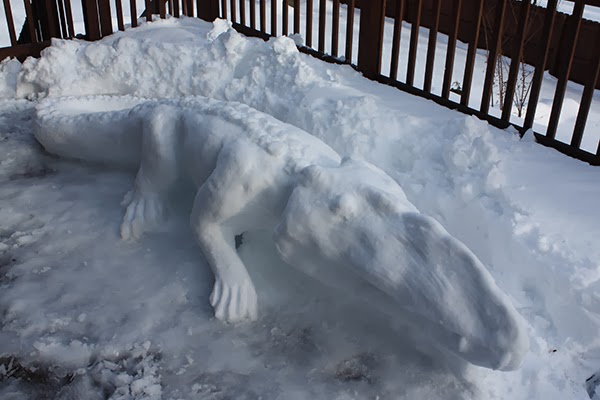This is an important new paper describing some new fishes from the Chinle Formation of Utah. Well-preserved fish are rare throughout much of the Chinle and relatively understudied in previous decades. Nonetheless, they were important constituents of the Late Triassic biota, and much material goes unrecognized because many Chinle Formation workers (myself included) are one, unfamiliar with the fish fossil record, and two, the taxonomy of this group is in serious need of revision. Sarah's new work and phylogenentic study is a huge step forward in rectifying these problems. We should all start paying more attention.
Gibson, S. Z. 2013. Biodiversity and Evolutionary History of Lophionotus (Neopterygii: Semionotiformes) from the Western United States. Copeia 2013:582-603. DOI: 10.1643/CI-12-028
Abstract - Two species of the neopterygian genus †Lophionotus Gibson, 2013, are described. Specimens of †Lophionotus chinleana, new species, were previously and recently collected from freshwater deposits in the Upper Triassic Chinle Formation of Lisbon Valley, southeastern Utah. †Semionotus kanabensis Schaeffer and Dunkle, 1950, from lacustrine deposits in the Lower Jurassic Moenave Formation of southwestern Utah, is herein redescribed and attributed to the genus †Lophionotus, based on shared characters, including the infraorbital in the posteroventral corner of the orbit being expanded and contacting the anterior ramus of the preoperculum. Both new species of †Lophionotus are distinct from †L. sanjuanensis Gibson, 2013, in that they lack a postcranial hump, deep body, dense tuberculation, and ventrally expanded preoperculum. The addition of two new species lends to a revised generic description of the genus †Lophionotus. A phylogenetic analysis infers a monophyletic †Lophionotus sister to the genus †Semionotus, and †Lophionotus is placed within the family †Semionotidae within †Semionotiformes.
Ice Archosauromorph
Recent retreat of ancient ice sheets from western Virginia has revealed the frozen exquisitely preserved remains of a phytosaurian archosaur. The specimen appears to be of the fully crested type, similar to Nicrosaurus kapffi, previously only known from Germany. As the photos below demonstrate, even details of the soft tissue are preserved giving us amazing insight of this animal such as proportions, posture, and that it had bulgy eyeballs. A close-up of the pes shows that digit four is the longest, supporting the hypothesis that the ichnoform Apatopus is indeed the track of phytosaurians.
Discoverers Michelle Stocker and Sterling Nesbitt are taking measurements and describing the new find before the Spring thaw, hopefully publishing the results soon. In the meantime they are also eagerly awaiting what other rare forms may be exposed as these thick deposits of eastern ice finally retreat.
Subscribe to:
Posts (Atom)




